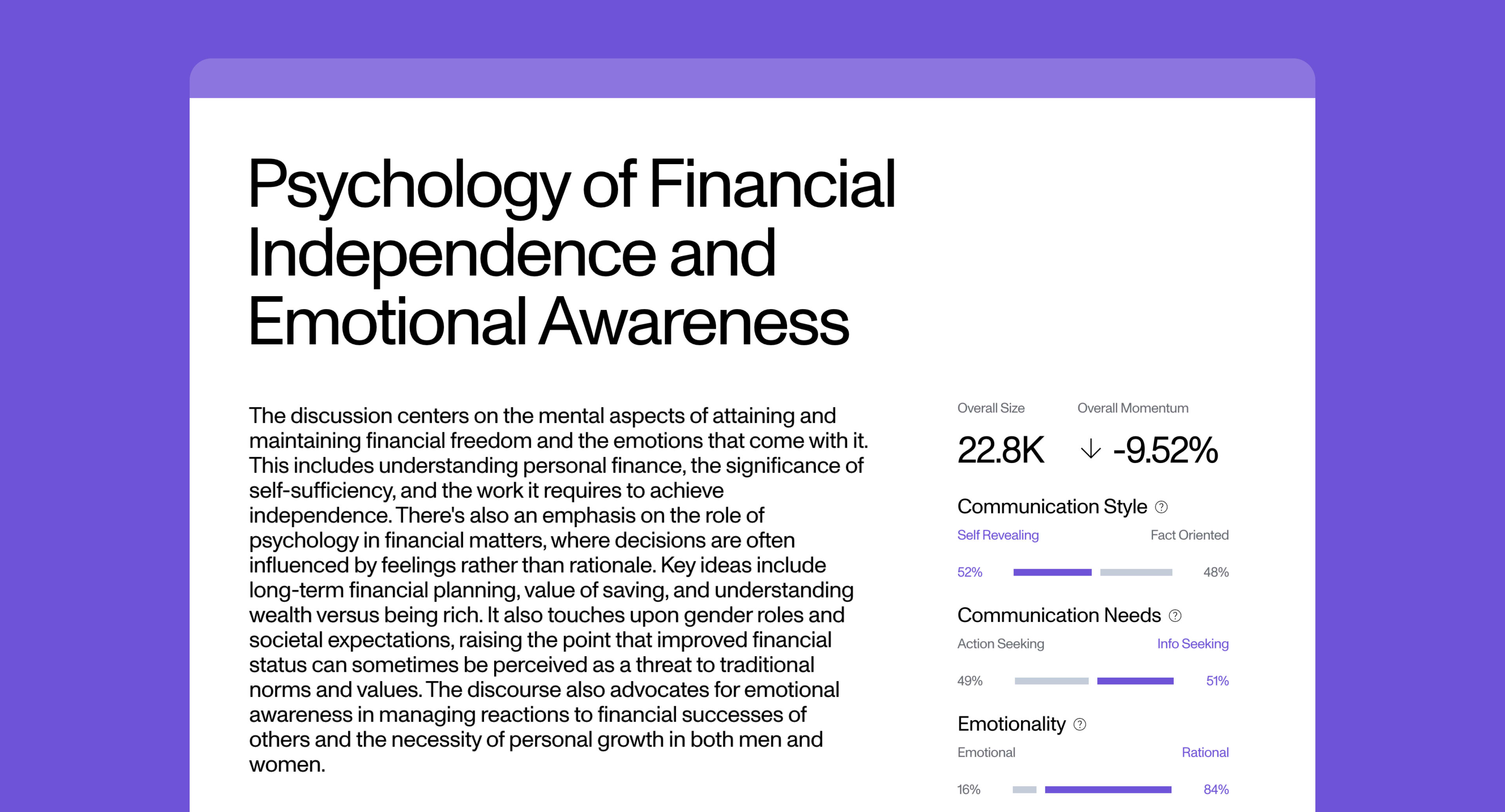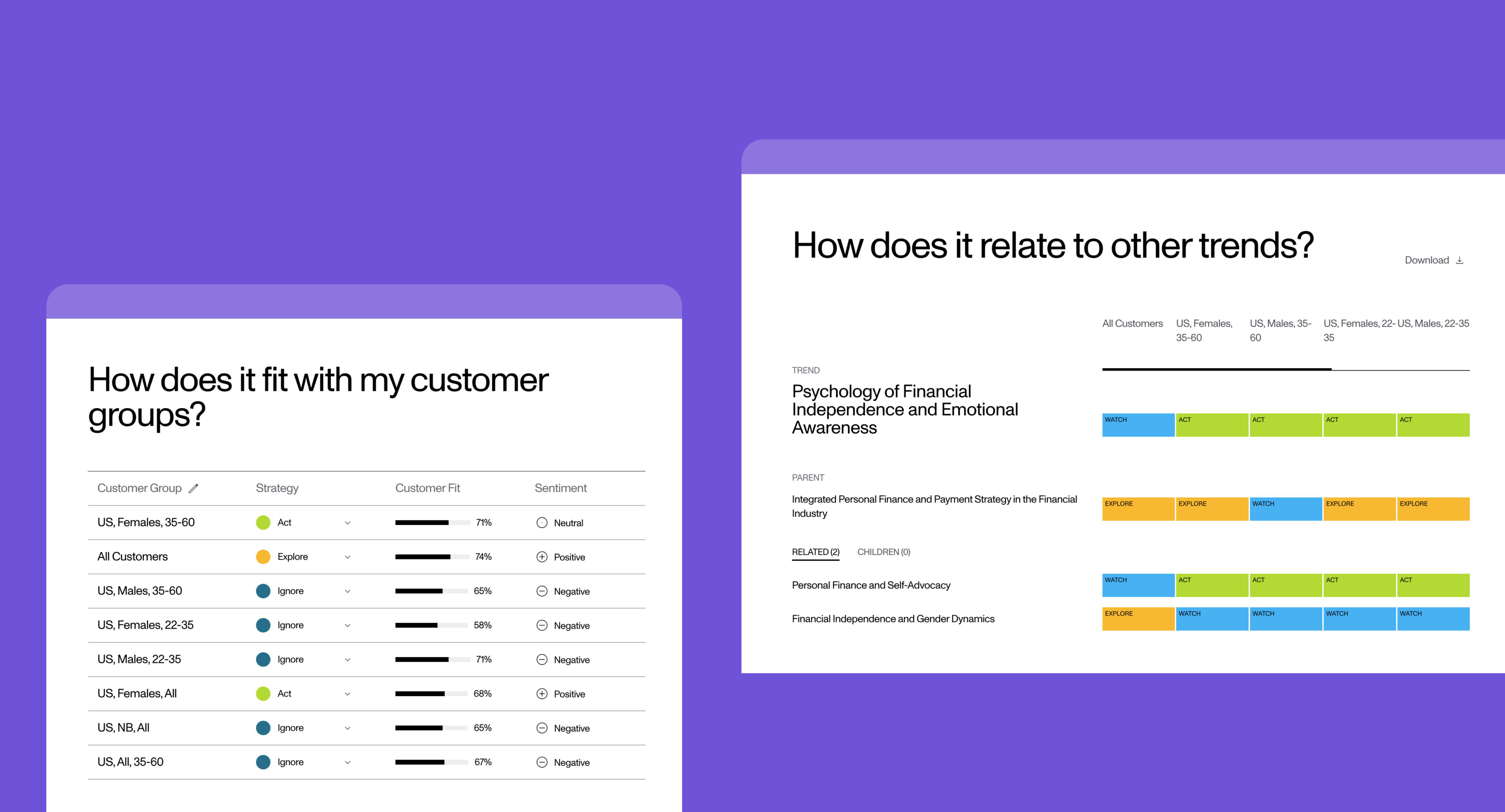CD
AI
Analysis
Why You Should Use AI to Go Back to the Basics and Listen
In the past, brands and marketers used to study customers in ways that were labor-intensive, but created long-term relationships. In the age of big data, we’re primed for optimization, but miss out on meaningful opportunities for growth. Our new tool Culture Decoder offers a new beginning.
Words by Michelle Yaiser, GVP of Data Products
Image generated by Midjourney
“Win on Sunday. Sell on Monday.” Decades ago both local dealerships and auto manufacturers recognized that when people got excited watching cars race at a nearby track over the weekend, there were more sales in local dealerships on Monday.
The car buyers weren’t motivated by a newspaper ad, radio spot, or TV commercial. They were excited and inspired by an event in their daily lives: spending a Sunday with their family at their local racetrack. Sure, manufacturers sponsored drivers and teams. And local dealerships would have a presence at the track. But it was everything about the track experience around the cars — the sounds, the smells, the fans, the weather, the food — that amped up the excitement. Although auto brands were there, it wasn’t any direct engagement with a brand that led them to walk in the door ready to buy on Monday.
That was decades ago, though. Back when we’d spend months conducting careful studies with surveys, focus groups, and field observations to inform our product, marketing, and advertising decisions. Businesses sincerely cared about understanding their customers' daily routines, problems, and preferences because they recognized many of their purchase motivations could be found in that “mundane” data. They knew that this understanding enabled them to tailor their products and services to meet and anticipate their consumers’ needs.
How we used to listen.
This ability helped create a more enjoyable customer experience, created a competitive advantage, and ensured long-term relationships with satisfied, repeat customers. They also used the knowledge to connect with consumers on a personal level, which strengthened brand loyalty and fostered a community of customers who were more likely to advocate for the brand.
Brands also acknowledged that culture is a powerful force that shapes motivations, values, behaviors, trends, and societal norms. Staying attuned to what is happening in culture helps brands create products and campaigns that resonate with target customer groups, allowing them to remain culturally relevant in ways that are authentic to their brand.
The perils of optimization.
Today, companies still say they care about culture and its impact. But their digital channels are optimized to convert as quickly as possible, providing only the info and experiences that may lead to a short-term purchase instead of actually listening to consumers, or actually sharing key brand information that may allow them to differentiate themselves from competitors. This, in turn, means that they’re potentially missing out on developing a loyal customer willing to spend more over the course of a long-term relationship.
First-party data misses out on much of the richness of daily life that happens outside of the direct engagement with brands, as well as the cultural context of those daily lives. Let’s be clear: first-party data is essential. But heavy (or sole) reliance on it usually makes brands miss out on new opportunities to expand their market, by either connecting with existing customers in novel ways or by discovering untapped customer groups.
Mix in the continued push for big data collection coupled with the desire to use AI to process and understand that first-party data, and brands are simply left with diminishing opportunities for growth.
But what if we harness AI and big data to go back to the basics? What if we could use them to develop an understanding of daily lives and the surrounding culture using customers’ own words and images? How much better — and faster — can products, interactions, and campaigns be?
This is exactly what we set out to do with Culture Decoder.
A tool for listening to reality as it unfolds.
Culture Decoder uses AI to analyze billions of data points in order to identify cultural trends. It assesses each trend for its relevance with customer groups; calculates the size, sentiment, and momentum of each trend; and provides strategic recommendations on how a brand should (or should not) use a trend to drive engagement.
Those billions of data points are created by consumers while living their daily lives. It's the conversations they have on social media, outside of any brand’s social media campaigns. It's the blogs they write and the reviews they post. It's what they are eating, what they are looking for in a new appliance and why, what they want to do in their free time (and how much they are willing to spend doing it), and what their kids are playing with right now.
Let’s see three actual cases of listening and acting with Culture Decoder.

Screenshot of Culture Decoder in action. Not related to the cases mentioned in this piece.
The auto manufacturer focused on sustainability.
Last summer, there were numerous trends about electric vehicles (EVs) in the auto industry. In certain customer groups, there was also a trend related to commercial vehicles that began to rapidly grow. Certain consumers were starting to make purchase decisions based on whether the delivery/service vehicle was an EV. Both trends were children of a broader trend related to sustainability that extended beyond the auto industry.
A major international auto manufacturer had already announced that their entire commercial vehicle production would be EV by a certain year. Because average consumers don’t buy commercial vehicles, the manufacturer had never shared any info about them. Yet after seeing these trends, the manufacturer created a small campaign highlighting their goal of all commercial vehicles being EVs as an example of their commitment to sustainability.
Consumer inquiries about the brand and its non-commercial EVs increased.
The bank that leaned into financial literacy.
After seeing related trends about the student loan crisis and financial literacy within banking for women and men between the ages of 25 and 60 (the parents of most college students), a bank launched a free service that explained the details of student loans including deferments, repayment, and interest accrual. They also provided bank employees to help families complete the FAFSA. All services had both parent and student versions.

Screenshot of Culture Decoder in action. Not related to the cases mentioned in this piece.
The retailer that learned about men via gift wrapping.
After analysis of their existing customer data had shown only a small sales opportunity, a retailer had ended product development on a new athleisure wear item targeting male-identifying individuals. After seeing a highly-relevant trend with older men discussing the benefits of a similar athleisure wear item, the retailer went back to their customer data. They discovered that most of the men in their database only purchased gifts (with gift wrapping) for females. They had never purchased any of the retailer’s male products and therefore weren’t really the target market for the new product. The development of the new product is being re-evaluated.
What does this all mean?
We must continue to use all of the wonderful first-party data that we have. But we need to start using it more smartly by complementing its usage with data that shines a light on culture and people’s daily lives. The ability to tailor products, anticipate needs, and engage customers on a personal level within the current cultural context will lead to richer, more relevant engagements with greater perceived value. Companies that prioritize this understanding will thrive, experiencing meaningful and sustainable growth.
